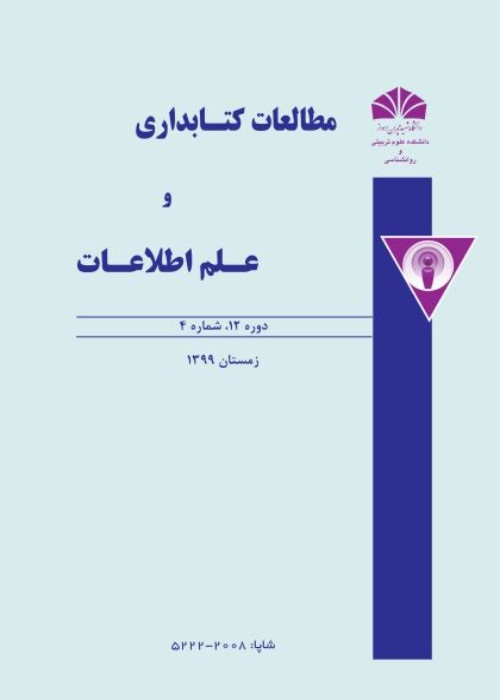Evaluation of Barriers to Knowledge Flow Factors in Academic Libraries Based on Knowledge Management Maturity Model
Knowledge management is a planned and structured view of creating, sharing and storing knowledge as an organizational asset that is designed to enhance the ability, speed and effectiveness of an organization to deliver products or services to customers in line with business strategy. But the barriers to knowledge flow usually create barriers that lead to temporary constraints, lack of motivation, lack of awareness, and lack of coordination among departments, which in turn impose a heavy cost on the organization, so the main purpose of this study was to rank university libraries. Based on the maturity model of knowledge management to utilize the services of libraries in knowledge management.
The present study is a qualitative and quantitative combination. The statistical population consisted of 18 experts in the qualitative section and 184 in the central libraries of the university in the first phase and 35 faculty members in the second group of information science in the first stage. . Data collection tool was a researcher-made questionnaire.
In evaluating the importance of Friedman test for knowledge flow dimensions with other dimensions of knowledge flow, mean rating of management factors was 5.72, knowledge source dimension 5.17, organizational factors 4.67, time factors 4.37, communication channel factors 4.22, individual factors 4.21, technical factors 3.92 and knowledge features dimension 3.72 which have the lowest rank and least importance among the different dimensions of knowledge flow. In this test, chi-square statistic value was calculated 97.55 and significance level was 0.000. Since the level of significance is smaller than the alpha value (P <0.05), the null hypothesis that there is no significant difference between the dimensions of knowledge rejection flow and its opposite assumption is confirmed. This means that there is a statistically significant difference between the dimensions of knowledge flow. Also, ranking libraries with maturity levels of knowledge management showed that at developmental level, at the level of individual and managerial factors, at the level of standardization, at the level of knowledge features and communication channels, at the optimization level, at the knowledge source dimension, and at the innovation level, at the organizational factors dimension. Time factors have obstacles. For the knowledge features and communication channels, the standardization stage is more tangible than the stages of knowledge flow. For the source of knowledge, organizational and technical factors are the most hindrances in the fourth level of optimization. For managerial and individual factors, the second level, development, is more tangible for this obstacle. For time factors, innovation is recognized as the most important obstacle. Overall, the results show that innovation is the most tangible step in the whole process.
Academic libraries as organizations, based on the steps of the knowledge management cycle, which include knowledge creation, knowledge gathering, knowledge sharing, knowledge access and use of knowledge, have an important role to play in knowledge management. The current status of the library compared to the maturity levels of KM showed that barriers to knowledge flow factors other than start level, development level, standardization level, optimization level and level of innovation have barriers. These barriers at the level of innovation, the level of exploitation, are the output of knowledge management and the ability to manage and lead an organization. If libraries are effectively managed to overcome the barriers at this level, their output will be desirable. Ineffective management and leadership have the most unsuccessful role in managing libraries. It should be kept in mind that organization leadership is a key pillar of knowledge management, so it should be clear to managers how and where to manage knowledge, because if the management of the organization does not seriously support knowledge management in any way, any ineffective effort will be made. Will be. Of course, not all the barriers to knowledge flow factors can be removed at once, or an implementation plan can be designed for all of them, as there are certainly barriers to organizational life and various factors. So, to get rid of them, you need all the attention. Therefore, although the emphasis on the role of managerial factors is more than other factors, the role of other factors such as organizational factors, human factors, technical factors, temporal factors, communication channel factors should not be overlooked. The present study identifies the bottlenecks and levels of barriers at each level of knowledge management levels in academic libraries. Specifies the factors and indicators needed for each step for the next step. This is a great help for managers to use it to remove the barriers to knowledge management.
- حق عضویت دریافتی صرف حمایت از نشریات عضو و نگهداری، تکمیل و توسعه مگیران میشود.
- پرداخت حق اشتراک و دانلود مقالات اجازه بازنشر آن در سایر رسانههای چاپی و دیجیتال را به کاربر نمیدهد.



